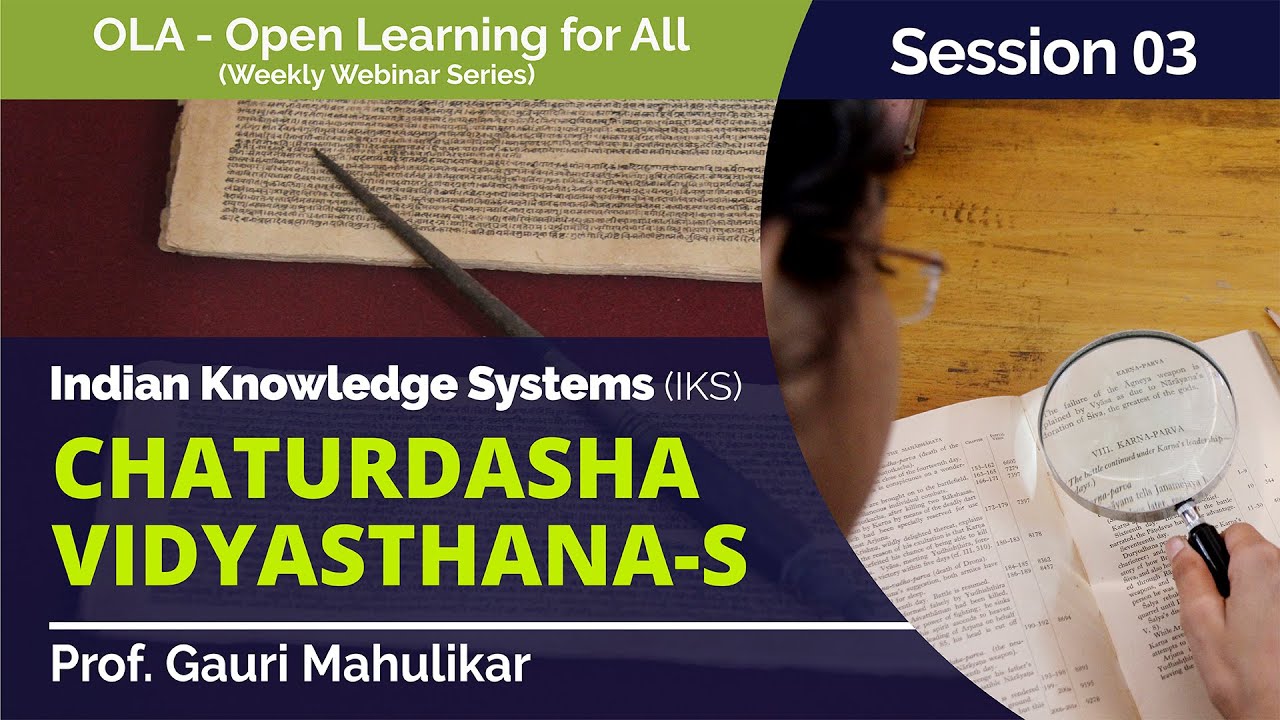The Exoteric and the Esoteric
Prof. Mahulikar says the pursuit of knowledge enriched their inner world. Constant association with nature enabled them to develop their outer world and that resulted in the exoteric sciences—the scientific and material sciences.
[Exoteric: refers to knowledge that is outside and independent from a person’s experience and can be ascertained by anyone (related to common sense).]
Exoteric is bāhya public, and esoteric is inner, private. Esoteric sciences are philosophy, mysticism, Advaita… these are for self-enrichment. In exoteric sciences, we have biology, rasāyana, metallurgy, vimāna-vidyā, prāṇi-śāstra, zoology, horticulture… and so on, for the prosperity of the people.
The pursuit of nature and the constant association with nature enabled the visionary seers to develop the outer world, and that resulted in the exoteric sciences.
The constant association with nature and its appreciation, enhanced them internally, their inner selves; this enriched their abilities to examine nature and develop sciences necessary for man’s outer world, for the prosperity of man.
This then is the richness of the vidyāsthāna-s. Having understood this, let us look at the components of the vidyāsthāna-s.
- The Four Vedas
ṛg, yajus, sāma, atharvaṇa
- The ṛgveda mostly comprises prayers and hymns in praise of specific deities.
- Yajurveda is ritualistic. Derived from the root yaj, yajña, to ‘worship’, it contains the rituals with the formula that the attending priest chants before the yajña fire.
- Sāmaveda is musical in orientation. But in essence, it is the ṛg veda put to melody. So, while the ṛg verses are chanted, the sāmaveda sings the mantras.
- Atharvaṇaveda is the ‘knowledge storehouse of atharvāṇas—the procedures for everyday life’. But includes specifically, economics, state affairs, trade and commerce, and importantly, building and construction, and hence also called sthāpatyaveda.
When seen together, it is apparent that the foundation of living is in adoration, gratitude and worship of the deities of nature. It is from these that the next level proceeds—the corresponding Upavedas or applied knowledge.
- Upavedas or Applied Knowledge
Each Upaveda is associated with a main Veda.
āyurveda associated with the ṛg veda is all about life sciences, the oldest literature of the world and the first hymns of the medicinal herbs come here.
Āyurveda is the Veda of life, life span, diseases and their cures. The oldest hymns pertaining to these aspects occur in the ṛg veda. The Vedic seers have always asked for ‘a 100 years of a healthy life, free from diseases’ while praising the deities. They have prayed, ‘Let’s see 100 years, let’s hear 100 years, let’s live 100 years’. Not just for their wellbeing, but also to serve for the greater good.
Naturally then, organic ways of keeping the body (and consequently the mind) well are part of the ṛg veda. Corroborating this is a shanti mantra—
ॐ भद्रं कर्णेभिः शृणुयाम देवाः । भद्रं पश्येमाक्षभिर्यजत्राः । स्थिरैरङ्गैस्तुष्टुवाग्ँसस्तनूभिः । व्यशेम देवहितं यदायुः । om bhadraṁ karṇnebhiḥ śṛrṇuyāma devāḥ bhadraṁ paśyemākṣabhiryajatrāḥ| sthirairaṅgaiḥsṭuvāṁsastanūbhiḥ vyaśema devahitaṁ yadāyuḥ||
Let us see and hear all that is good… then, with firm limbs and bodies, let us offer our prostrations to the devas, so let us have a healthy physique; let us get that kind of āyuḥ, that the devas have, so let us live long…
[Alternative: May we, endowed with body strong with limbs, offering praise, complete the full span of life bestowed upon us by the divine beings]
[Usually attributed to atharvaṇaveda, this verse also exists in the ṛgveda1.89.8]
For the yajur veda, it is dhanurveda—weaponry. If yajña and worship is the purport of the yajurveda, then protecting the yajña and ensuring it is conducted without obstacles would need knowledge of weaponry, at least at a time when yajñas were conducted for gains and destruction of yajñas by opposing elements, was common.
For the sāma veda, it is gandharva veda—fine arts, performing arts. We have seen that the sāmaveda is the ṛg veda hymns put to metre, hence the gāndharvaveda as a upaveda is understandable.
For the atharvaṇa veda, it is sthāpatya veda—knowledge of building, architecture and engineering. vāstunirmāṇa , devālayanirmāṇa , digging of wells… Even today in the South of India, an architect is called a sthāpati.
Likewise, the Vedāṅgas are also linked to the Vedas.
(Lest we forget, we are examining this treasure bed of knowledge that is the vidyāsthāna-s and we are climbing upwards, brick by brick and along the way, we are going to see how every branch of the Vedas burst forth into multiple branches of knowledge.)
To be continued…

